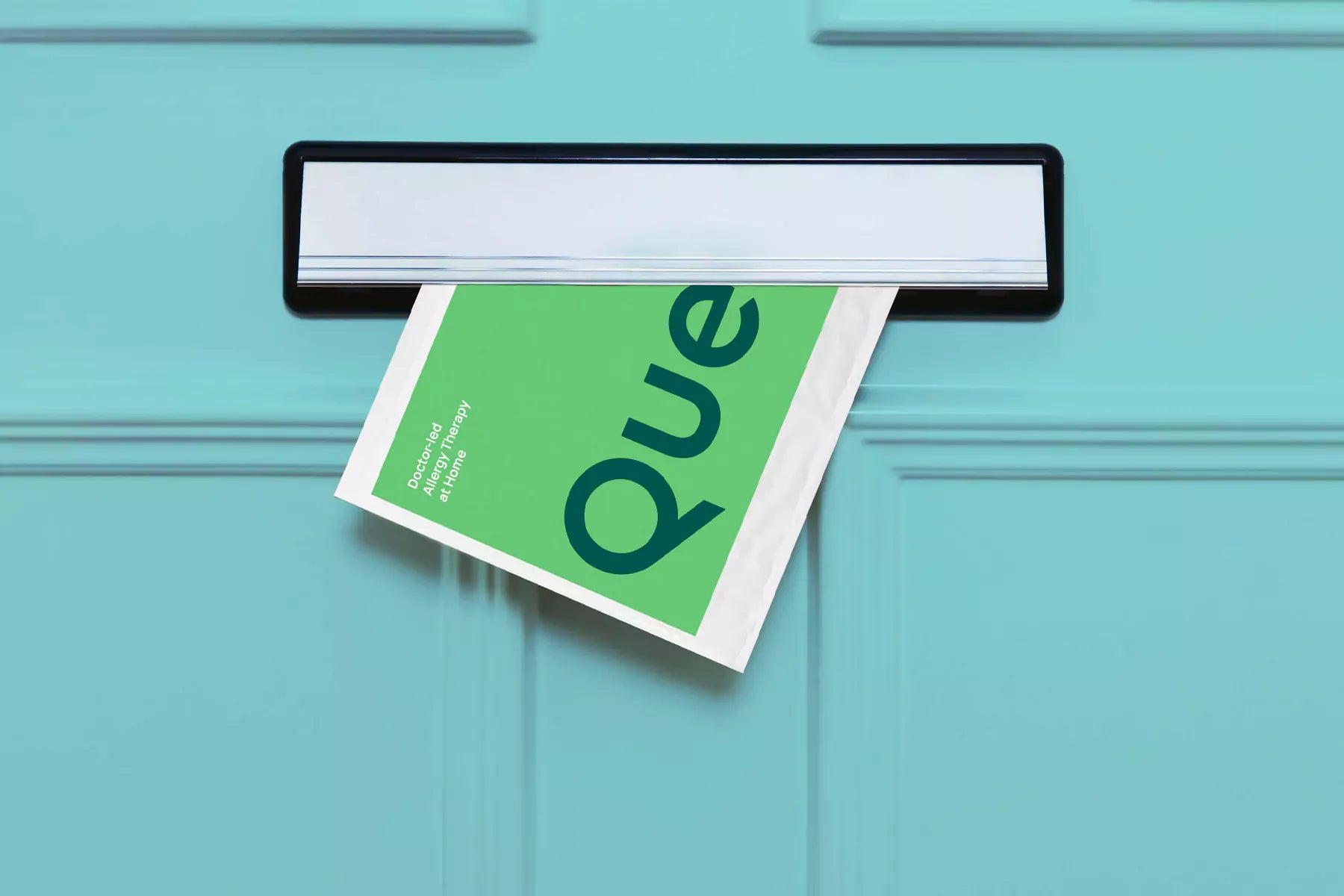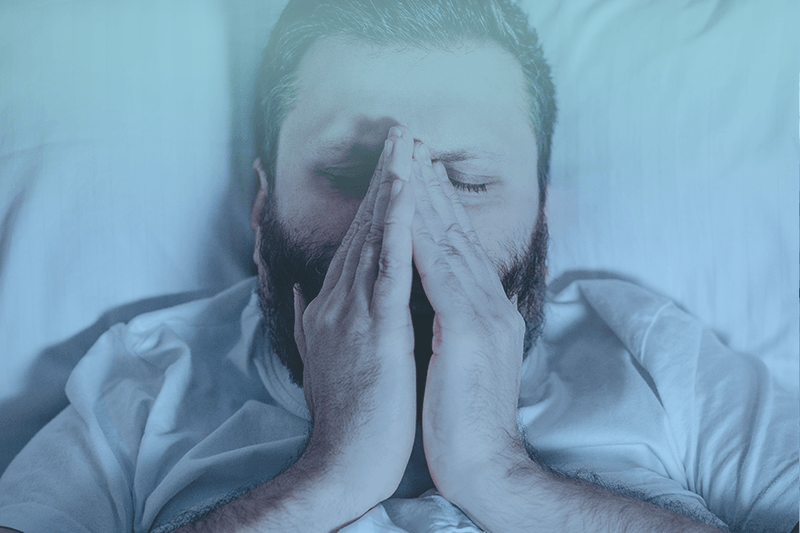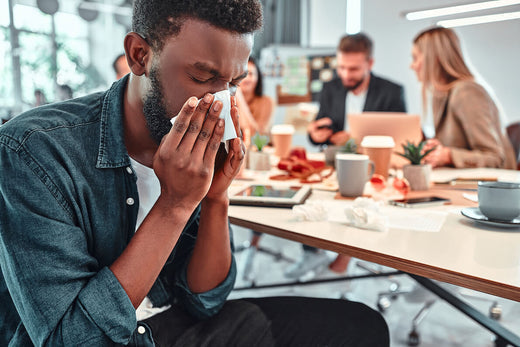
How Does A Free At Home Allergy Test Kit Work?
How to Use Your Free Allergy Test At Home
Your free at home allergy test kit allows you to provide a blood sample with just one easy prick of the finger. Through DIY allergy testing, you collect the sample on a blood spot card and then send it off in the pre-labeled envelope to our accredited lab. Whether common issues like mold or lesser-known irritants, the source of your environmental allergies can be readily detected.
With Quello, you can say goodbye to time-consuming and costly doctor visits, and get your FREE at home allergy test immediately. Quello’s trusted at-home tests deliver easy, accurate results whenever you need them! Our specialists analyze your sample and provide personalized treatment options right for you.
If you are concerned with food allergies, other testing is recommended.

What’s The Purpose of a Free At Home Allergy Test Kit?
At home allergy test kits accurately and reliably detect the environmental allergies affecting you. Whether you’re having major issues or simply have sensitivity to certain non-food allergens, your DIY allergen test can determine the issue.
Thanks to the DIY allergy test kit, you need only provide a few drops of blood, complete the submission card, and mail off the envelope. Convenient, simple, and accurate, Quello’s free at home allergy test can help you get proper treatment to prevent potentially debilitating allergy fatigue.
What’s Included In a Free At Home Allergy Test Kit?
When you first open your kit and see the included items, you may be a little confused. That’s completely okay, the process is actually extremely easy. Every DIY test kit we send should include:
- Lancet
- Gauze
- Directions
- Blood Drop Card
- Prepaid Envelope
- Submission Card
- Alcohol Pad
- Plaster
Should you make a mistake or fail to provide a proper sample at first, you can always perform the procedure again. Using the lancet to prick your finger is designed to be as painless as possible. And if you’re squeamish, you’re in luck. Just a few droplets on the collection card and you’re good to go!
Are Free At Home Allergy Tests As Good As In-Person Allergy Tests?
This is a question our allergy specialists receive often, and truthfully, it all depends on your personal needs and situation. Although a free at home allergy test may be less comprehensive than in-person allergy testing, these DIY test kits are perfect for convenient, reliable results. You typically need to only prick yourself once, compared to many times in some clinical settings.
Should your non-food allergies become severely disruptive in your daily routine, consider visiting allergy specialists. Again, because our free at home allergy test is best suited for environmental allergens, we recommend consulting other specialists for issues related to food allergies.
What Does a Free At Home Allergy Test Do With My Sample?
If you’re wondering, how does my free at home allergy test work, you’re not alone. When using a DIY allergy test kit, you are essentially testing for antibodies. By honing in on a specific type of antibody, you can determine how your immune system is reacting, and what exactly it is reacting to.
What Kind of Antibodies Do At Home Allergy Tests Detect?
Quello’s free allergy test kit specifically targets an antibody known as immunoglobulin E (IgE). While all of our bodies contain some amount of these antibodies, certain allergies may cause an increase in antibody production. If your IgE levels are high, that is a good indication that your immune system is overreacting to non-food allergens.
But How Does Antibody Testing Determine What Allergen Is Affecting Me?
Great question! Our highly specialized team utilizes an advanced process called allergen-specific testing. Although the science can be quite complex, the simple answer is: we can detect the precise allergen impacting you.
After you’ve provided your blood sample and mailed it off to the certified lab, you meet with one of our specialty trained allergy providers to go over your results. Our test will perform both a total IgE test and a specific IgE test on your blood. The total test measures the overall amount of immunoglobulins in your blood, whereas the specific test determines the amount of immunoglobulins produced in response to a specific allergen.
Remember, this test is used for environmental allergies. Food-related allergies should be addressed with other tests.
How Do I Use My Free At Home Allergy Test Kit?
Before you determine the source of your allergies with a free at home allergy test kit, it’s a good idea to understand why you have all that ‘stuff’ in there in the first place. If you open up the kit and don’t know left from right, up from down, don’t be baffled.
Let’s do a brief rundown of the previously mentioned items and what they’re used for:
- Alcohol Wipe - Use this to clean your finger before/after pricking
- Lancet - This needle just barely penetrates your skin for a prick
- Gauze - Used to absorb blood after providing your sample
- Blood Drop Card - This is where you press your finger for the sample
- Plaster - Use this bandaid once you’ve provided your sample
- Submission Card - Complete with contact information to receive results
-
Prepaid Envelope - Use this to return your submission and blood sample cards
At Quello, we understand that dealing with environmental allergies can be a headache (literally). More than that, these pesky symptoms can make it difficult to lead a normal day-to-day life. If you’re experiencing symptoms, or have other symptoms that may be allergy-related, consider a free at home allergy test.
With at-home allergy test kits, you can hone in on the exact IgE antibody circulating in your blood. More importantly, you can identify the exact non-food allergen causing your issues!
What To Do With Your Free Mail-In Allergy Test
Our allergy specialists believe in convenience and simplicity. We want you to determine your precise issue so that you can quickly and effectively treat it. That’s why our DIY allergy test kit is perfect for the modern, busy lifestyle. Don’t want to waste time, money, and energy at the doctor’s office?
Tired of getting multiple diagnoses and not knowing where to turn?
Before you do any of that, try at-home allergen-specific testing. For environmental allergies, our in-home allergy test kit makes the process as easy as can be.
At-Home Allergy Testing in Four Simple Steps
Ready to get to the bottom of your environmental allergies? The wonders of modern technology make testing for allergies at home super convenient. With a Quello allergy-testing kit, it only takes minutes.
Simply:
- Take the provided lancet to prick your finger one time - just like a pinch!
- Provide several droplets of blood to the sample card.
- Complete the submission card with contact information
- Send back both cards in the provided envelope.
And that’s all there is to it! After our allergy specialists receive and analyze the sample, we’ll tailor an effective treatment plan, with personalized allergy drops designed uniquely for you.
If, at any point during the test, you have difficulty providing enough droplets, gentle movements may help your blood flow better. Typically, the entire test can be completed in as little as two minutes!
What Happens After You Send In Your Blood Sample?
Once you’ve mailed the pre-labeled envelope to the laboratory, results are processed with 2-3 days of our lab receiving your bloodwork. By isolating the specific allergens triggering specific IgE antibodies, we can then formulate tailored allergy drops perfect for your unique sensitivities. Whereas some at home test kits look for an entire panel of allergens - which reduces reliability and trustworthiness - our laboratory targets the most likely causes of your symptoms. These include environmental causes, but do not factor food-related allergens.
Common Allergens Your At Home Allergy Test Looks For
- Trees
- Weed & Grasses
- Dog Dander
- Cat Dander
- Horses
- Cockroaches
- Dust Mites
- Mold
Remember, if you go to a clinical setting, the tests may look for a massive panel of allergens. While this may sound good on its face, you could end up being pricked more than 40 times. Not to mention, many of those allergens may be irrelevant to your symptoms. In the end, you’re spending time, money, and effort you shouldn’t have!
How Your Allergy Test Kit Sample Is Analyzed
The blood allergy analysis process is proven valid and reliable. By measuring the levels of immunoglobulin E (IgE), a laboratory can determine the extent to which your immune system experienced a type I hypersensitivity reaction. This reaction pathway is critical to understanding heightened responses to environmental antigens, commonly called allergens.
What’s a Type I Hypersensitivity Reaction?
Individuals with allergy sensitivities will undergo a specific reaction when exposed or re-exposed to particular antigens. This reaction can be measured, in part, by the release of immune cells, which include T-helper (Th) cells and B cells. These immune cells then release a targeted IgE antibody to counteract the specific allergen in your system.
Your body will also release other chemicals, such as histamines, that cause your symptoms. This is why antihistamines are often used to treat some allergy symptoms.
Remember, allergies are essentially overreactions to relatively harmless foreign substances. When you undergo a Type 1 hypersensitivity reaction, this reaction is immediate. It is also disproportionate to the threat posed. Think of it like using a sledgehammer to hang a picture nail - sure, it might do the job, but it also might leave you with some drywall repair!
At Quello, our blood analysis for IgE antibodies factors in these various components to deliver you a standardized reading and interpretation of your non-food-related allergies.
Reporting and Interpreting IgE Antibody Levels
Once the results of your free at home allergy test have been finalized, you’ll need to understand a few things. Firstly, a positive test result indicates you have an allergen sensitivity. This is pretty basic. Secondly, you should realize that just because you have a certain level of IgE, that does not mean you’ll have a certain severity of symptoms. Some people may have higher levels of IgE with lower-level symptoms, and vice versa.
It’s also important to note that false negatives and false positives can occur. Depending on your age, the duration of exposure, the manner of exposure, and similarities in measured allergens, your test results may be inaccurate.
Our specialists can help you make sense of all the results so that you can rest assured in knowing exactly what is going on.

Overcome your allergies at home with our doctor-led therapy.
Get started with our free allergy test kitGet Started with no test needed.
Overcome your allergies at home with our doctor-led therapy.
Get started with our free allergy test kitGet Started with no test needed.



